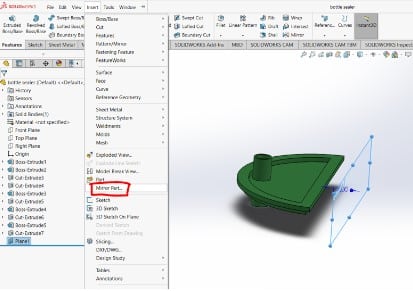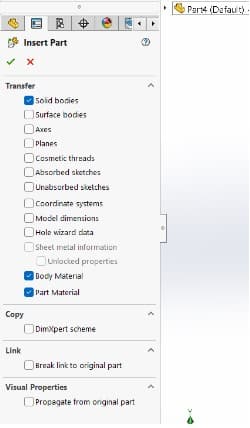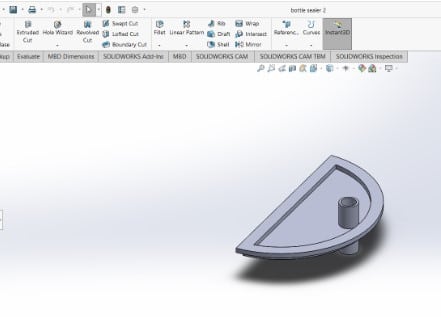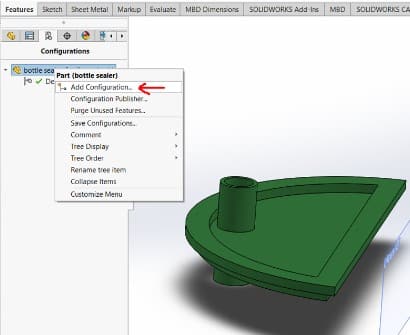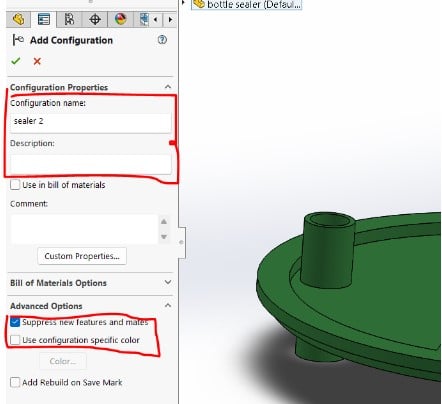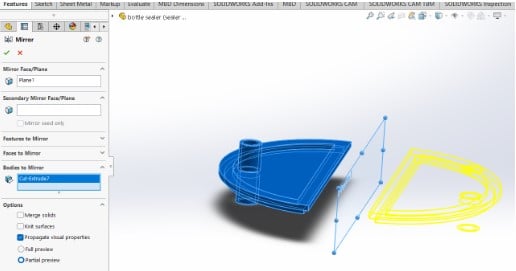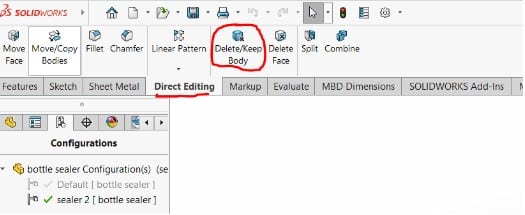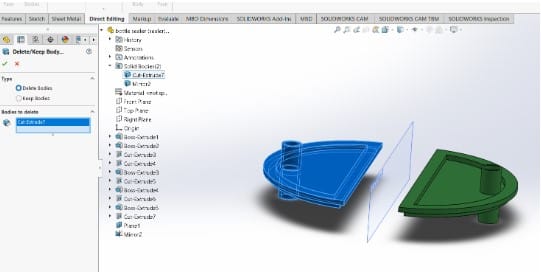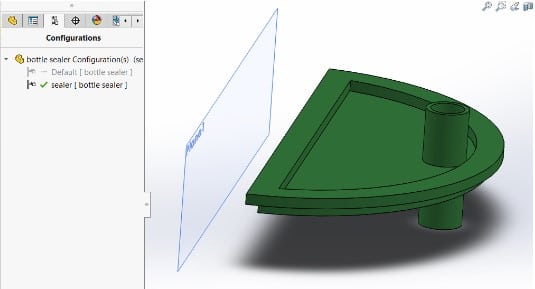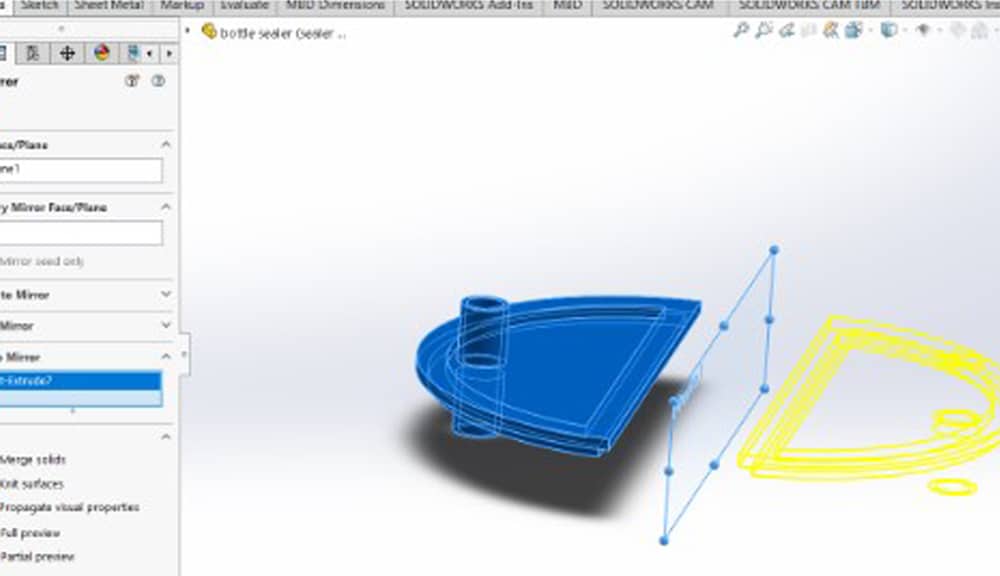
The same parts that are mirror images of one another may be used on both the right and left sides of symmetric assemblies. SolidWorks may mirror the part in reference to the parent model rather than generating a new part and taking the effort to create and detail the mirrored part file.
This implies that any modifications made to the parent will likewise affect the reflected section. I’ll be showing you how to make mirrored duplicates of parts in this tech blog. The two primary methods will be explored.
Easy Methods in Solidworks How to Mirror a Part Successfully
Method 1
To mirror a part, either choose a face and choose mirror part from the insert dropdown option at the top of the SolidWorks interface or construct a plane to mirror the component over the model.
Make careful to choose the plane you want to mirror about since Mirror Part will be grayed out if you don’t select a plane before selecting Insert > Mirror Part.
SOLIDWORKS will open a dialog box once we choose the mirror part command, allowing us to select our template and then the parts we wish to import from the original part.
You may bring along designs and measurements from the original model, as well as solid bodies, any surface bodies you’ve produced, and solid bodies. Most of the time, though, we just want to transfer the solid body and perhaps a few of the previous model’s features, such as any custom properties we may have allocated, such the material or vendor.
I’ll import the solid bodies from my original component file for my example. I’ll click the green checkmark to confirm that my item has been put into my new environment, and then I’ll save the model as bottle sealer2.
It’s important to keep in mind that this mirrored portion is linked back to the original, so any modifications I make to the original model will instantly reflect on the mirrored portion.
Method 2
In contrast to the previous approach, which duplicated the component into a new, separate file, this method keeps the mirrored part in the same file as the original part.
We must first establish a New Configuration before we can use the Mirror command. Navigate to the Configuration Manager tab in the Feature Manager tree area. Click with the right mouse button and choose Add Configuration.
Name and describe this new configuration appropriately. If you wish to add further features to the original configuration and don’t want those features to be suppressed in this mirrored configuration, you may choose to uncheck Suppress new features and mates under Advanced Options. Press the green checkmark.
We will now carry out the mirroring procedure. There are many ways to access the mirror command: Either from the Features Tab > Mirror option, the Features Tab > Linear Pattern > Mirror option, or the Insert > Pattern/Mirror > Mirror option.
Pick the symmetry plane in the Mirror Face/Plane box, and then select each body you wish to mirror in the Bodies to mirror box. Due to the fact that we’ll be removing the existing body, be sure you deselect Merge solids and Knit surfaces under settings.
Choose Delete/Keep Body from the Direct Editing tab to erase the original body.
Click OK after selecting the original body or bodies and making sure the Delete Bodies checkbox is checked. In order to pick bodies, you may either click on them in the graphics area or open the Solid Bodies folder in the feature tree before doing so.
You now have the mirror image of that part.
Simply double-click the Default configuration under the configuration tab to return to the original part.

